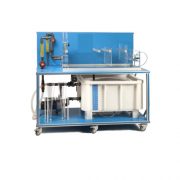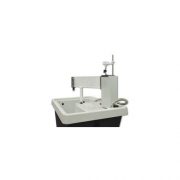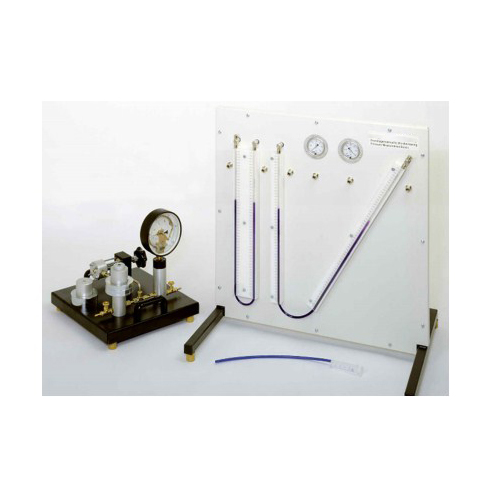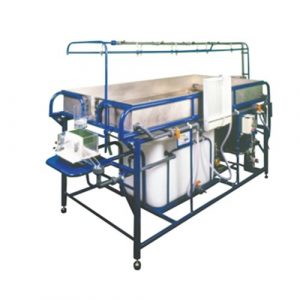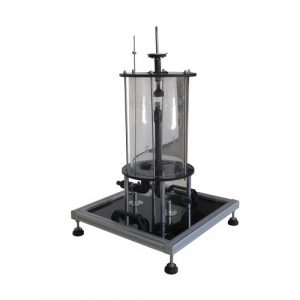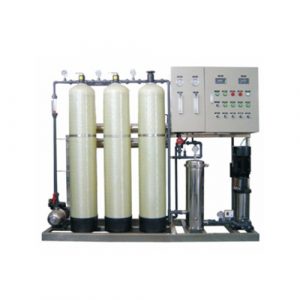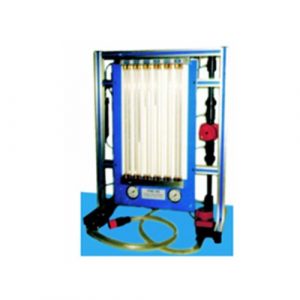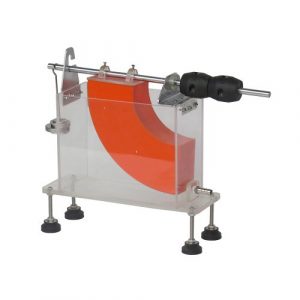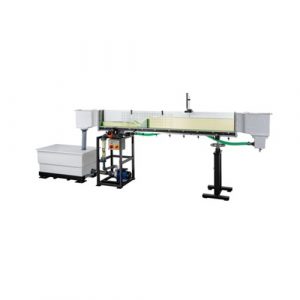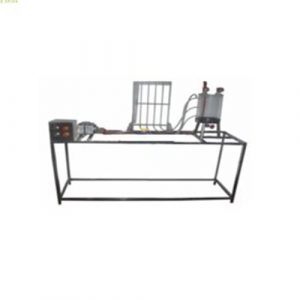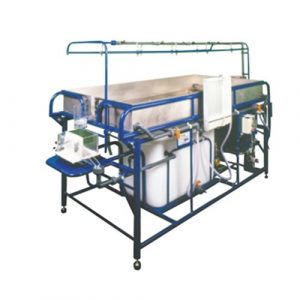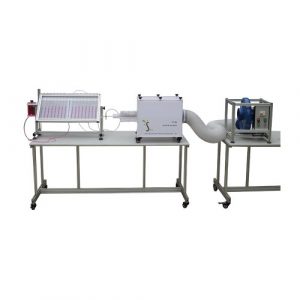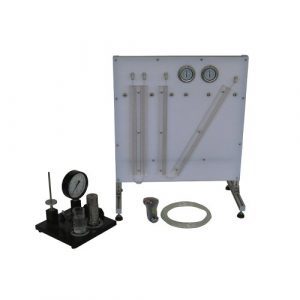- Description
- Inquiry
TB-220804-V-4.5 Pressure Measuring Tools and Methods Laboratory Equipment
I.Introduction to Fluid Mechanics
A branch of mechanics, which mainly studies the static state and motion state of the fluid itself under the action of various forces, as well as the interaction and flow laws when there is relative motion between the fluid and the solid boundary wall.
appear
Fluid mechanics is gradually developed in the struggle between human beings and nature and in production practice. There is a legend in China that the Great Yu controlled the floods and dredged the rivers. In the Qin Dynasty, Li Bing and his son (3rd century BC) led the working people to build Dujiangyan, which is still functioning today. Around the same time, the Romans built a massive system of water pipes.
The first contributor to the formation of the discipline of fluid mechanics was Archimedes in ancient Greece. He established the theory of liquid balance, including the buoyancy theorem and the stability of floating bodies, and laid the foundation of hydrostatics. After more than a thousand years, there was no major development in fluid mechanics.
The works of Leonardo da Vinci in Italy in the 15th century only talked about water waves, pipe flow, hydraulic machinery, and the principle of bird flight.
In the 17th century, Pascal clarified the concept of pressure in static fluids. However, fluid mechanics, especially fluid dynamics, as a rigorous science, was gradually formed with the establishment of the concepts of velocity, acceleration, force, and flow field in classical mechanics, as well as the establishment of the three conservation laws of mass, momentum, and energy. of.
developing
- Newton, the founder of mechanics in the 17th century, studied the resistance of an object moving in a liquid, and obtained the relationship between the resistance and the fluid density, the cross-sectional area of the object and the square of the moving speed. He also put forward the following assumptions about the internal friction of viscous fluids: that is, the frictional stress between two fluid layers is proportional to the relative sliding velocity of the two layers and inversely proportional to the distance between the two layers (that is, Newton’s law of viscosity).
After that, French H. Pitot invented the Pitot tube to measure the flow velocity; D’Alembert carried out many experimental work on the resistance of ships in the canal, and confirmed the square relationship between the resistance and the speed of the object; L. Euler of Switzerland adopted He introduced the concept of continuum, extended the concept of pressure in statics to moving fluids, established Euler’s equations, and correctly described the motion of inviscid fluids with differential equations; Bernoulli started from the energy conservation of classical mechanics, The flow of water in the water supply pipeline is studied, and the experiments are carefully arranged and analyzed, and the relationship between the flow velocity, pressure, and pipeline elevation under the steady motion of the fluid is obtained – Bernoulli’s equation.
The establishment of Euler’s equation and Bernoulli’s equation is the symbol of fluid dynamics as a branch discipline. Since then, the stage of quantitative research on fluid motion with differential equations and experimental measurements has begun.
Scientists who have made outstanding contributions to the development of fluid mechanics
Scientists who have made outstanding contributions to the development of fluid mechanics (15 photos)
Since the 18th century, the theory of potential flow has made great progress, and many laws have been clarified in the aspects of water waves, tides, vortex motion, and acoustics. French J.-L. Lagrange has done a lot of research on vortex motion, and German H. von Helmholtz has done a lot of research on vortex motion. In the above studies, the viscosity of the fluid does not play an important role, that is, the considered is an inviscid fluid, so this theory does not account for the effect of viscosity in the fluid.
theoretical basis
The fluid motion equations that take into account viscosity were established by French C.-L.-M.-H. Navier in 1821 and British GG Stokes in 1845, and later named Navier-Stokes. Tox’s equation, which is the theoretical basis of fluid dynamics.
Since the Navier-Stokes equations are a set of nonlinear partial differential equations, it is very difficult to study fluid motion with analytical methods. In order to simplify the equations, scholars have adopted the assumption that the fluid is incompressible and inviscid, but got D’Alembert’s paradox that goes against the truth – the resistance of an object moving in a fluid is equal to zero. Therefore, by the end of the 19th century, although great progress has been made in fluid dynamics using analytical methods, it is not easy to play a role in promoting production.
A parallel development of fluid dynamics is hydraulics (see Hydrodynamics). This is an empirical science that summarizes some empirical formulas from a large number of experiments to express the relationship between flow parameters in order to meet the needs of production and engineering.
Bernoulli’s theorem
Bernoulli’s theorem
What unifies the above two approaches is the boundary layer theory. It was founded in 1904 by German L. Prandtl. The Prandtl school gradually simplified the NS equation from 1904 to 1921, and established the boundary layer theory from various perspectives such as reasoning, mathematical demonstration and experimental measurement, which can actually calculate the flow state and fluid in the boundary layer under simple conditions. Viscous force between solids. At the same time, Planck proposed many new concepts, which were widely used in the design of aircraft and steam turbines. This theory not only clarifies the applicable range of ideal fluids, but also calculates the frictional resistance encountered by objects in motion. The above two situations have been unified.
II.Technical specifications
▪ Study of a pointer pressure gauge build and principle of operation, determination of the relative measurement error at various pressure levels
▪ Study of a spring indicator build and principle of operation, its application in assessing the pressure level, determination of the relative measurement error at various pressure levels when compared with the pressure gauge readings
▪ Study of the pressure sensor with an analog output signal measured using a voltmeter (multimeter) operation principle, determination of the relative measurement error when compared with the pressure gauge readings
▪ Study of the pressure sensor with a digital output signal operation principle, determination of the relative measurement error when compared with the pressure gauge readings
▪ Study of the air pressure control device in the pressure reducing valve receiver
▪ Study of the external characteristics of the compressor that creates air pressure in the receiver
Build
▪ tabletop
▪ laboratory
Equipment shall include the following main parts
▪ pressure measuring tools
▪ high pressure compressor with receiver
▪ pointer pressure gauges
▪ controls
▪ all notes, names and symbols on the equipment shall be in English and/or Russian
Power supply
▪ 220V±10%, 50Hz
▪ power cable, European standard
III.Delivery set
▪ Equipment shall be supplied as a complete delivery set and shall be compatible with design and functionality
▪ Delivery set shall include, but not be limited to:
- Pressure Measuring Tools and Methods Laboratory Equipment – 1 set
- Description of possible laboratory works with “Pressure Measuring
Tools and Methods” Laboratory Equipment application – 1 set
- Tools for installation and maintenance of the “Pressure Measuring Tools and Methods”, Laboratory Equipment – 1 set
- Accessories, spare parts and consumables not listed above, but recommended by the Manufacturer – 1 set



